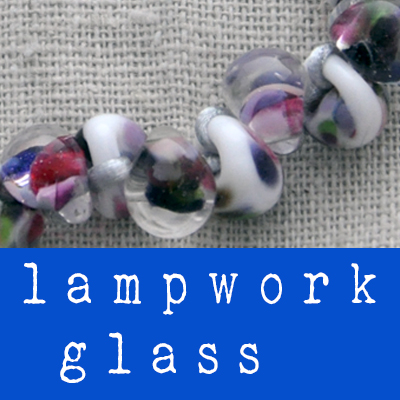
l a m p w o r k g l a s s
Lampwork glass is made using a hot, localized heat source like a blow torch rather than a furnace to melt
the glass, and this process enables addition of fine detail to a glass bead. Beads are created by
heating glass rods in a flame and wrapping the soft, molten glass around a mandrel. Additional layers
and detail may be added. Glass beads are finished by annealing them; this means the glass is heated
and held above its stress-relief point to ensure it would not crack or shatter under different thermal
conditions.
The two most common types of glass for lampworking are "soft" soda-lime or lead glass and
"hard" borosilicate glass. Borosilicate glass has a higher melting temperature
but it has more forgiving thermal properties (less expansion or contraction when heating
or cooling), making it an increasingly popular choice as more colors become available.
One of my favorite vendors for lampwork glass, Unicorne Beads, uses dichroic glass in its jewelry
creations. Dichroic glass used multiple thin layers of metal oxides, fired to shimmering perfection
in high temperature kilns, to create vibrant, colorful pieces whose color can appear to change with
viewing angle.

